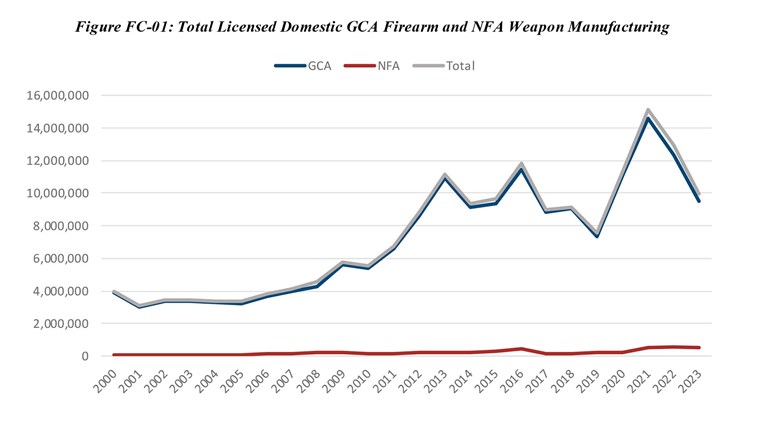
New York State deer hunter Jay Martin says the deer hunting in the southeastern Catskill Mountains where he lives and hunts is better than ever. He credits antler-point restrictions put in place several years ago with his opinion of the deer hunting.
“I’ve been hunting for a lot of years,” says Martin, who is in his late 60s. “Very seldom have I seen any older bucks. But that’s turning around. We’re starting to get a lot more 2½- and 3½-year-old bucks now.”
In New York’s Ulster County (Martin’s hunting grounds) yearlings used to be 75 percent or more of the buck harvest. That was before the 2005-2006 deer season, when the New York Department of Environmental Conservation (DEC) mandated that a buck taken in any of four wildlife management units (WMUs) must have at least one antler with three points, and those points must be at least 1 inch long. Since then, Martin notes, the yearling harvest has dropped by 70 percent in Ulster County, while the take of 2½-year-olds has increased by 86 percent and the number of 3½-year-old bucks by 167 percent.
Backing such as Martin’s, however, is hardly universal. In 2009 the DEC proposed adding antler restrictions to eight more WMUs in the northern and western Catskill region. Rich Davenport, recording secretary for the Erie County Federation of Sportsmen’s Clubs, helped lead the charge against the proposal and the lack of support caused the DEC to withdraw the proposal.
Jeremy Hurst, DEC’s chief deer biologist, says, “We have hunters who would like to see us manage for more older bucks and hunters who are adamantly opposed to restrictions. Much of the discussion in recent years has focused solely on antler-point restrictions. I think we need to broaden the discussion and look at some other options beyond mandatory antler restrictions that might reduce harvest pressure on young bucks.”
Many other states have tried different approaches.
Looking for Answers
According to a report compiled by the Quality Deer Management Association (QDMA), 22 states had some form of antler restrictions for whitetails in place in 2008. The report notes: “In 2008, six states (Alabama, Delaware, Georgia, Michigan, Pennsylvania and Vermont) had statewide restrictions, at least for one buck, while 16 states used them in some wildlife management areas, units, regions and/or military bases. The most commonly used restriction was the number of antler points. Fourteen states employed this technique, and depending on the state, the number varied from one to four points on a single antler.”
Another option is an antler-spread restriction, which is employed by Delaware, Kentucky and West Virginia. A legal West Virginia buck has to have an outside spread of 14 inches, while Delaware and Kentucky both require 15 inches. The remaining states require some combination of antler points, spread and/or beam length.
Kip Adams, QDMA’s director of education and outreach, notes that, as far as yearling bucks go, point restrictions don’t always do the job. “Where you have really good habitat, such as in parts of the Midwest, yearling bucks can have six and even eight points,” says Adams. “As a result, antler-point restrictions of three or four points to one side wouldn’t keep these bucks out of the harvest. In such cases, antler-spread restrictions do a much better job at focusing the harvest onto older bucks. Of course, some deer will have very narrow racks and will always have very narrow racks. But on average, using antler spread or width is a much better and more biologically sound approach for protecting yearlings than just antler-point restrictions.”
What Texas Can Teach Us
Everything is bigger in Texas, even the Lone Star State’s antler-restriction program. What started as a six-county experiment in 2004 now incorporates 113 Texas counties. In these counties, a buck can be taken if it has: at least one “unbranched antler,” or an inside spread measurement between main beams of 13 inches or greater, or six points or more on one antler.
Mitch Lockwood, Texas Parks and Wildlife (TPW) deer program leader, says, “After the third year [of the original experimental program], the results were already impressive. Yearling bucks went from 79 percent of the harvest to 29 percent; meanwhile, we increased the harvest of 4½-year-old bucks from 4 to 32 percent.”
TPW felt the deer herd’s sex and age ratios were out of balance in some counties and that the restrictions could help rectify both. Yet the experiment came with an upfront cost of an overall drop of 38 percent of the harvest that first year. “But by the second year, we were already back up to pre-regulation levels,” says Lockwood.
The Texas program was expanded to another 61 counties a few years later, all of them in east and central Texas, and then to 113 counties in the fall of 2009. While the restrictions have produced increased numbers of big, mature bucks, Lockwood adds there were good biological reasons for the program, such as better fawn survival. Yearlings and 2-year-olds are not very proficient breeders compared to older bucks, says Lockwood. When these youngsters make up the bulk of available males, many does are not inseminated during the first breeding cycle. Generally speaking, the later in the year that does are bred, the lower the chances of fawn survival.
However, the restrictions do put some nice bucks out of reach. Under TPW’s 13-inch spread requirement, a buck with a naturally narrow rack might achieve eight or 10 points and be illegal. The “one-un-branched-antler” regulation allows hunters to take a smaller buck for the freezer, and knowing they can do that, says Lockwood, allows many hunters to wait for that truly big buck. Meanwhile, the yearling with three and four points may grow into a really nice buck.
Of course, all those requirements are a lot to work through while a buck chases a doe by someone’s stand.
An Imperfect Science
Older bucks mean bigger racks, right? Not always. One unintended consequence of antler-point restrictions can be “high grading,” essentially shielding young males with lesser quality racks from bullets. This has arguably happened in parts of Mississippi. To protect yearlings, the state required, starting in 1995, that any bucks taken must have at least four antler points.
Chad Dacus, Mississippi’s deer-program coordinator, says, “Before the four-point rule, over half the bucks killed on Mississippi Deer Management Assistance Program lands and on wildlife management areas were 1½ years old. Ten years later, 60 percent of the bucks taken were 4½ years old or older. So in 10 years, the regulation turned the harvest graph upside down.”
The bucks got older, and in some locales their racks definitely got more impressive. But using harvest data from antler-restriction areas and computer simulation, the state published research stating that the Mississippi antler-point restrictions could actually decrease antler size in some areas. This is because Mississippi hunters didn’t let many 6- and 8-pointers get by them, even though a lot of these deer were yearlings. Meanwhile, the antler size in older classes of bucks killed on six WMAs decreased by an estimated 5 to 9 inches for 2½-year-old bucks and by 10 to 17 inches for 3½-year-old bucks. Though these numbers seem alarming, it is scientifically impossible to prove that antler restrictions were the reason for the decreased sizes; after all, changes in forage conditions, such as from a drought, can significantly affect antler growth.
So, starting in 2009, in Mississippi a legal buck must have a 10-inch inside spread or one main beam that is at least 13 inches long in Hunting Zones 1 and 2. In Zone 3, which encompasses the Delta, the inside spread has to be at least 13 inches or a main beam must be at least 15 inches long.
Meanwhile, Missouri biologists have not documented an increase in antler sizes since their antler restriction went into effect in 2004. Missouri’s regulation mandates at least four points to one side, with each point measuring at least one inch. Biologists say the harvest of 3½- and 4½-year-old bucks has risen.
The increase in the number of adult bucks harvested in Missouri’s antler-restriction counties between 2003 (the year prior to implementation of antler restriction) and 2007 (the fourth year of antler restrictions) was 982 for 3½-year-olds, a 30 percent increase, and 1,415 for 4½-year-olds, a 128 percent increase, according to Lonnie Hansen, a resource scientist with the Missouri Department of Conservation (DOC).
Hansen says, “In the control counties without the antler restriction, during the same time periods, there was a 20 percent reduction in 3½-year-olds and a 16 percent increase in 4½-year-olds.”
The restrictions have proven so popular with hunters that the DOC increased the antler-restriction counties from 29 to 65 for the 2008 season.
So overall, antler-point restrictions are turning out to be useful game-management tools—sometimes.





































